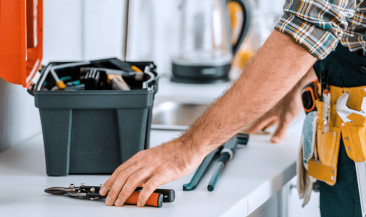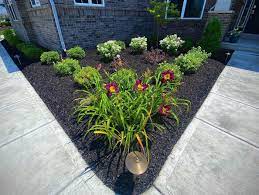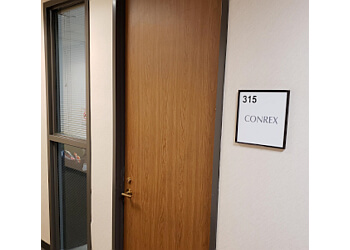
It is crucial to understand the cost of maintaining a property if you're thinking about investing. Not only will you need to be aware of the basics, but you will also want to be prepared for unexpected expenses.
There are two types to think about: fixed or variable. Fixed expenses are recurring expenses that happen at a certain time, such as taxes, utilities, insurance, or insurance. Variable expenses will differ depending on the type and condition of the rental property. You may spend more cleaning multi-family homes than you would on one family home. In addition, you may need to replace items that have naturally aged.
The best way to determine the real cost of maintaining a property is to consult a qualified professional. An experienced commercial broker will provide you with industry insight and help you to evaluate real estate more effectively. This will allow to you avoid overpriced properties, and help you get the best value for your money.

To determine your maintenance needs, multiply the square footage of the property by 1.5. That means if you own a two-bedroom rental home with a total living area of 2,200 square feet, you'll need to budget at least $2,200 a year in upkeep.
Most contractors will give you a detailed estimate on maintenance costs. This is based on the specific needs of your area and local pricing. Some contractors charge a fee for each job, while others will work for a set hourly rate. Make sure you get several bids before you decide on a company.
A key part of being a successful landlord is to be able to manage your maintenance. No matter whether you have a fulltime manager or a group of freelancers managing your property, it is important to be proactive. There are software solutions available that can help plan and conduct preventive maintenance. It is a good idea for you to keep track on your maintenance costs. This data can be used to calculate how much you should spend for your next project.
Another useful tool for calculating your maintenance costs is the 1% rule. This doesn't guarantee that you can cut your expenses but it sets a reasonable expectation that maintenance costs will be at least 1% of the property's value.

Although this is true, property maintenance costs can be hard to estimate. You should make a plan for your finances to cover the cost of maintenance. A good emergency fund will help you to weather any unplanned emergencies.
Keeping track of your inventory can also help you minimize your maintenance costs. Using inventory management software can help you keep an eye on your inventory and prevent stockouts and overstocking. Additionally, it can help you prioritize work and ensure you're not wasting money on inefficient labor.
FAQ
How do I find a trustworthy handyman?
You should always get references before you hire a handyman. Ask your family and friends if they have ever used them. Also, look online--there are plenty of review sites where handymen post reviews of themselves.
Why should I hire somebody to help me do this job?
It's a great way to save time and money by hiring a handyman. Not only does this save you the hassle of hiring someone else, but it also saves you the headache of getting everything right the first time. A handyman will have all the equipment and supplies necessary to complete the job correctly.
Who will manage my handyman task?
Professional handymen are the best option if you're looking for someone local who can do a job such as replacing a light bulb or fixing a leaky faucet. A handyman service might be a good option if you have multiple jobs to do, such as replacing a roof or installing floor tiles.
If you are looking for someone who can offer ongoing support, such as regular maintenance, then you probably want to use a handyman service like Handyman Services.
How often do I need to hire a handyman
It depends on the nature of your project. If you are looking for a quick fix, like installing a lightbulb, you may only need one handyman per week. However, if there is a lot of remodeling involved, you could probably use several handymen over the course of the project.
What's the typical time taken to complete a DIY project like this?
The average DIY project takes two to four hours. The project's complexity and difficulty will impact the length.
What time does it take for a handyman finish a job?
It all depends on how large the project is. The size of the project will determine how long it takes. Larger projects may take more time. No matter how large the project is, a handyman can finish it in less than a week.
How long does the process take to become handyman?
It takes many years of hard work to become an expert handyman. It usually starts with helping friends and family and gradually expands into a full-time career.
As you progress, you will learn all the necessary skills.
Statistics
- More than 20% of homes in America have outdoor living spaces, including decks and patios. (mrhandyman.com)
- Mila keeps a commission of 20% for each completed service performed by Friends and charges various service fees regarding work done by Pros. (appjobs.com)
- A franchise was approximately $110,000 with a franchise fee of $14,900, according to a spokesperson for a national handyman franchise. (en.wikipedia.org)
- “Before the pandemic, 40% of people asked how we could estimate a job when we weren't there,” Rose recalled. (inquirer.com)
- According to the U.S. Bureau of Labor Statistics, in May 2020, there are 1,357,630 handymen employed in the U.S.. (angi.com)
External Links
How To
How to Replace Broken Tiles
Step 1 - Remove the old tiles.
Removing the tiles from your flooring is a good idea. If you plan to use these tiles later, it is important that you keep them in good condition. You can note the parts that are missing or damaged so that you can find replacements.
Step 2 - Choose New Tiles
You can take a look at the different options for tile replacement.
-
You should find a similar tile to the one that you've just taken out.
-
You can use the measurements taken when you removed the tile to locate a matching piece. This makes it easier to get the right size without having to measure again.
-
Consider looking for colors, patterns, textures and sizes in a variety of shapes and colors.
-
Consider the grout you want to use. Some people prefer a certain color, others like to mix it up.
-
You should ensure that the tile you choose is resistant to moisture.
-
Make sure you consider where your tile will be placed. It can help you save money and time.
-
Once you've picked your tile, place an order online or call your local Lowe's location to place it.
Step 3: Install the tiles.
To install your tiles, follow the same procedure as before. You must align them correctly to ensure they fit together.
Step 4 – Clean up
Make sure to clean up all debris and other materials before applying the final layer of protection material.
This will prevent dirt or dust from collecting between the tiles and causing mold.
Step 5 -- Sand the Floor
After you have cleaned everything, sand the floor to remove any particles that were left from the previous step.
Step 6 – Finish Off
After the floor has been smoothed, you can apply protective coatings to the tiles. It is important to wait before you apply the protective coatings.
You can always use a "damp and dry" product on your floors to protect them from staining.
It will not address all problems that may arise once your tiles have been installed. An anti-slip coating can be added to the protective layer for children who are often running around.
Last but not least, be sure to leave the protective sealing on for several weeks before you return to your home.